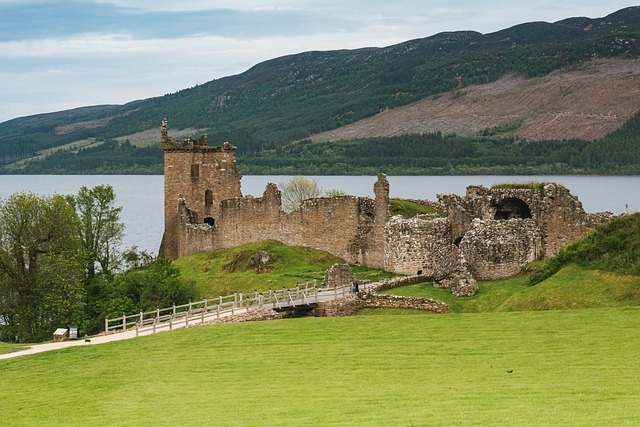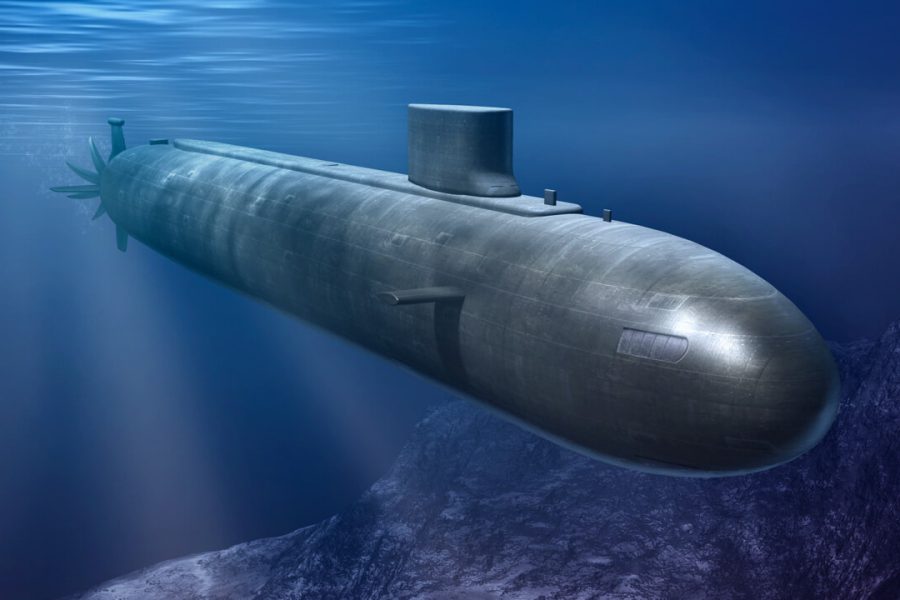Modern sniperappeared around the end of the nineteenth century, particularly during the American Civil War. Although still not known as "sharpshooters," sharpshooters were used by both Union and Confederate forces throughout the conflict, albeit in limited numbers. Their role would be greatly expanded at the turn of the century, when improvements in firepower and tactics allowed these well-trained soldiers to do much more than they had previously been able to.
Over time, the sniper has evolved into a deadly force on the modern battlefield, with kill rates comparable to much heavier units such as artillery or tanks . Typically, the most lethal snipers in history target high-value targets, and they have had a huge impact on nearly every major conflict of the last century, from the brutal war on the Eastern Front of World War II to the recent large-scale battles against ISIS.
10. Charles Mawhinney, 103 murders

Charles Mawhinney is credited with 103 kills during the Vietnam War, the highest in U.S. Marine Corps history. However, his colleagues say the number may have been higher 300 , which made him one of the best snipers in the history of wars.
Mawhinney was born in 1949 in Lakeview, Oregon, and received sniper training at the Scout Sniper School at Camp Pendleton, California. He was sent to the Vietnam War during its most intense phase in 1968, where he spent three months as a scout sniper in various units before enlisting in Delta Company. It was here that Charles Mawhinney made most of his kills—in one instance, he killed 16 North Vietnamese soldiers with precision shots to the head in 30 seconds.
9. Billy Sing, 200+ kills

When Willian “Billy” Sing signed up to fight in World War I, he had no idea he would become one of the finest snipers of the entire conflict – perhaps even of all time. He was part of the Australian Imperial Force and was deployed to the infamous Gallipoli front in May 1915, where Turkish snipers were wreaking havoc on Allied New Zealand and Australian troops, given their extensive knowledge of the terrain.
Billy was one of the snipers chosen and trained to counter them. Born in In 1886 In rural Queensland, Australia, he grew up among guns and horses , and by the time he enlisted in the army he had mastered both. By October 1915, Billy had shot down at least 201 Ottoman soldiers, and the number may have been much higher. He was so effective that the ANZAC soldiers gave him several nicknames , such as "killer" and "murderer".
8. Vasily Zaitsev, 225+ murders

The Battle of Stalingrad on the Eastern Front of World War II was one of the largest and bloodiest battles ever happened Its dense urban environment proved a playground for highly trained and experienced snipers from Nazi Germany and Soviet Russia, as both sides sent millions of reinforcements into the city during the five-month battle. However, it was the Russian snipers who truly dominated the battlefield, with some of the USSR's best snipers playing a role in Germany's eventual defeat at Stalingrad.
Vasily Grigoryevich Zaitsev was one of them. With more than 225 kills in less than five weeks in Stalingrad, including 11 elite German snipers, Zaitsev was one of the top Nazi assassins of the entire war. Some sources put his total kill count at around 400 , for which he was awarded the Hero of the Soviet Union medal. Zaitsev continued to be a respected figure in Soviet Russia after the war, and many of the methods he developed are still studied today. And are used by Russian sniper units in combat operations.
7. Josef Allerberger, 257 murders

Josef Allerberger was first sent to the Eastern Front as a German machine gunner in September 1943, although he quickly learned that he was much better with sniper rifles. The war in the east was not going well for the Germans after their defeat at Stalingrad in January, and Soviet snipers inflicted heavy losses on the retreating German army. And although Allerberger was unable to turn the tide—we all know how the war ended—he did manage to slow the Red Army's advance in that particular area.
Having accomplished no less 257 With confirmed kills, Josef Allerberger was one of the Wehrmacht's most lethal soldiers at the front. He devised a variety of tactics to maximize his impact on the battlefield, such as shooting at soldiers in the rear to create confusion and slow down the Soviet advance. He was known for camouflaging himself with an umbrella made from local foliage, an effective, easily deployable technique that allowed him to operate deep behind enemy lines.
6. Lyudmila Pavlichenko, 309 murders

When Germany invaded the Soviet Union in June 1941, Lyudmila Pavlichenko was one of many Soviet citizens who volunteered to defend their country. While studying to be a scientist and teacher at Kiev University, Pavlichenko was skilled with a rifle thanks to her training at a local sniper school. She continued to hone her skills on the battlefield, eventually becoming so proficient that the Germans nicknamed her “Lady Death.”
During the entire war, Lyudmila Pavlichenko killed no less than 309 Axis soldiers; 36 of them snipers . It was initially stationed in the Odessa area, although the rapidly changing front soon took it to Sevastopol on the Crimean Peninsula, where the invading German army vastly outnumbered the besieged defenders. Despite this, Pavlichenko would claim most of his kills during this battle. While the city fell after 250 days Through intense fighting - albeit for a relatively short time - the efforts of Pavlichenko and other leading Soviet fighters in Sevastopol seriously weakened Germany's military efforts in the east.
5. Matthäus Hetzenauer, 345 murders
Matthäus Hetzenauer was stationed in Central Europe in 1944 with the Wehrmacht's 3rd Mountain Division. All German efforts at the time were focused on slowing the rapid advance of Soviet troops toward Berlin, as Hitler mobilized some of his best units to stabilize the front in the east.
Although Hetzenauer was initially trained as a mountain infantryman, his commanders soon recognized his talent as a sniper and began training him as a marksman. He proved to be the most deadly of all German snipers on the Eastern Front, killing no less than 345 Red Army soldiers for several months before he was sent off due to a head injury. He was even awarded Iron Cross for his contribution to the German war effort, although since this cross is now considered a hated one neo-nazi symbol In most places, it would have meant little in the larger scheme of things. Regardless, Matthäus Hetzenauer did his job as best he could until he was captured by the Soviets in May 1945.
4. Francis Pegamagabow, 378 murders

While snipers existed before World War I, modern snipers have truly proven themselves in brutal battles Great War. Armed with new and improved weapons such as the bolt-action rifle with a telescopic sight, these early snipers were extremely effective in the trenches, especially in the early stages of the war when no one knew how to counter them.
By far the most deadly of these was a local Canadian soldier named Francis Pegamagabow. Pegahmagabou was born into the Ojibwa Native American clan Parry Island , Ontario, and entered the war as part of the Canadian Expeditionary Force. He fought as a scout and sniper, often operating in the dangerous no-man's land between the two sides. Despite facing a severe chlorine attack at the Second Battle of Ypres that permanently damaged his lungs, Pegahmagabow killed 378 enemy soldiers in the war before he was hospitalized with pneumonia in 1917.
3. Ivan Sidorenko, 500 murders

Ivan Sidorenko's fighting career began in 1939 when he, like many others across Russia, enlisted in the Red Army to defend against a German invasion. In 1941, he was sent to the decisive Battle of Moscow as part of a mortar unit that loaded and reloaded long-range artillery shells.
However, in his spare time, Sidorenko practiced his sniper skills, shooting unsuspecting German soldiers wherever he could find them, all from a standard rifles Mosin-Nagant . Within three years, his kill count had increased to 500, making him one of the deadliest snipers in history. He was so good at it that he was soon relieved of his mortar team duties and assigned to train new snipers at the front. Until he was seriously wounded in 1944 Ivan Sidorenko trained more than 250 Red Army snipers on the Eastern Front.
2. Vasily Shalvovich, 534 murders

Before Germany invaded Soviet Russia, Vasily Shalvovich worked on a collective farm in the Georgian SSR. Although he served in the Red Army for a short period between 1932 and 1933, it was not until World War II that he truly found his way with a sniper rifle. By June 1942, Shalvovich's skills had earned him a sniper position with the 138th Rifle Division, fighting at Stalingrad.
By the end of the war, Shalvovich had killed no less than 534 Nazis, making him the most successful Soviet sniper of the war. Some 215 of them were made between June and December 1944, when he fought in such places , such as Kerch, Stalingrad, Belarus, Lithuania, Latvia, Poland and Germany.
1. Simo Hayha, 542 kills

The Soviet Union invaded Finland in November 1939, starting the bloody Winter War that left hundreds of thousands dead. Although the USSR had made some territorial gains by the end of March 1940, the conflict was remembered for the fierce resistance put up by the Finns, which left more than 126,000 Soviets dead. soldier and about 26,000 of their own.
One of the faces of this resistance was Simo Häyhä, a farmer-turned-soldier credited with the most sniper kills in the history of modern warfare. Häyhä killed 542 Soviet soldiers in 98 days, earning him the nickname “ White Death " Unlike other names on this list, Hayha worked with a regular M/28-30 rifle. without optical sight. Although it was a simple weapon - even for the time - Häyhä had mastered it over years of hunting in the Finnish wilderness.













Оставить Комментарий